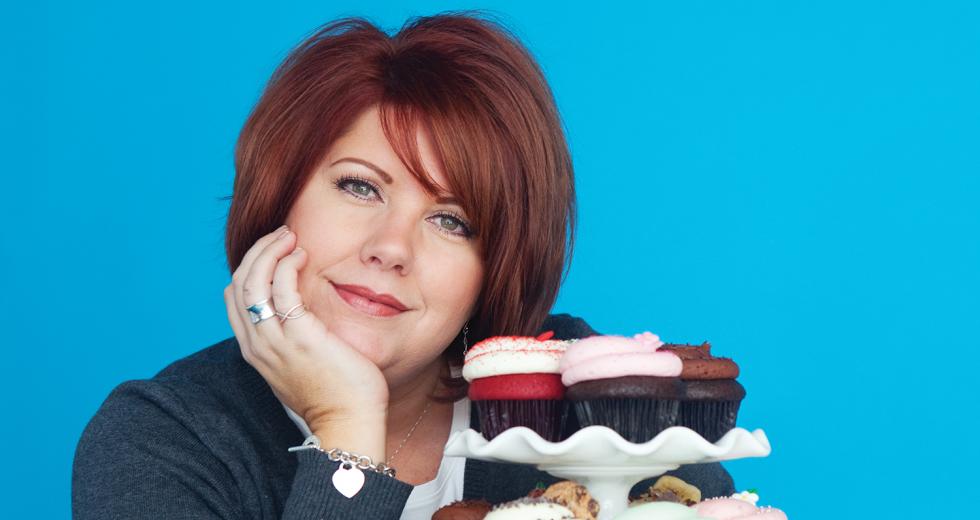Don’t mess with Icing on the Cupcake. The two-year-old specialty bakery in Rocklin has trademarked its name and isn’t shy about protecting it. Go open your own boutique bakery and sell cupcakes if you want, but steer clear of that brand name if you don’t want to hear from a lawyer.
“We actually are very active. We have filters on the Internet that constantly do crawls out there to find any use of Icing on the Cupcake,” says Christee Owens, co-owner and president. “We don’t mess around.”
A company’s brand can be one of its most valuable assets, and creating and protecting it isn’t always a sweet endeavor.
For starters, a brand is more than just a name, logo or slogan.
“The brand is the gut feeling that somebody has about you — either you individually or the company,” says Jim Love, creative director for Altosa Group in Sacramento. “The job of brand building is to engage that gut feeling.”
It’s a question of offering customers what they need and want, and that often has little to do with prices or product features, he says. Deep down, it’s about belonging to a group, looking cool or even just finding appealing food when hungry.
“If somebody delights you and intrigues you to discover what they have got, that is a real experience in [branding],” Love says.
As business owners think about their companies and the characteristics of their target customers, some clever or poignant language eventually surfaces to crystallize the message. That’s what can be turned into brand names and slogans.
Nike Inc. summed up its line of sports clothing and gear with “Just Do It.”
“I, as a cyclist, automatically understand what ‘Just Do It’ means,” Love says. “Nobody has to explain it to me.”
In 1986, Jim Mayfield invented a way for people to breathe underwater using a 20-foot line connected to an air tank on a raft. It was more than snorkeling yet not quite scuba diving. Mayfield called his company Snuba International Inc. and set up shop in Diamond Springs.
“When we began with Snuba, the patent for the system obviously had the greater value,” Mayfield says. “But as patents run out, trademarks do not. If you have done your work properly, a brand should have established itself in the marketplace to carry itself on its name.”
As with most items of value, laws are enacted to keep companies from stepping on one another’s toes. Brand names and taglines fall under trademark law.
“You’ve got to do your homework. Some of the names we wanted were already taken,” Owens says. But even after she and her partners decided Icing on the Cupcake had a good chance as a trademark, they brought in attorneys to do a more detailed search.
Mayfield, likewise, nailed down the availability of Snuba and got it registered at the start.
Sally Edwards didn’t have such a smooth experience. At 28 she opened a Sacramento store called Fleet Feet, which sells running shoes and apparel. That was in 1976, when she couldn’t simply hop on the Web to see if someone else was using the name. When she went to franchise her store a few years later, she discovered that a Colorado store had already filed for a federal trademark of Fleet Feet.
“If somebody delights you and intrigues you to discover what they have got, that is a real experience in [branding].”
Jim Love, creative director, Altosa Group
Edwards had been using the name for a few months longer than the Colorado store, but that didn’t matter. She eventually persuaded the man in Colorado to sell the rights, but only after years of patient negotiating.
For her current business, Heart Zones USA, Edwards secured the trademark before she even started the company. “It was easier with Heart Zones, not because of the experience I had, but because it was a very clearly focused application of the language,” Edwards says. “Heart Zones is a cardiovascular training system, so it is two different words to represent creating a healthy heart through exercise and moving.”
The company name could also serve as the foundation to specific applications, such as Heart Zones Training, Heart Zones Swimming and Heart Zones Cycling.
“If you call yourself The Tire Store, everyone is going to know that you sell tires, but you are never going to be able to keep your competitors from using that name,” says attorney Jeff Galvin, partner with law firm Downey Brand LLP in Sacramento. “It has to be a description of who you are as opposed to what you are.”
Put two or more words together, like heart and zones, and you may have a winner.
“We just trademarked Dolphin Trek,” Mayfield says. His company had to give up any trademark claim to dolphin because it’s a common word, but the combination passed muster.
Taglines and slogans follow the same rules. Mayfield has trademarked, “Go beyond snorkeling.” Downey Brand has trademarked, “Lawyers who see possibilities.” Icing On The Cupcake has trademarked, “Everyone deserves a cupcake.”
On the other hand, the Rocklin bakery hasn’t tried to trademark the generic phrases it puts inside its boxes of cupcakes: “It’s like a smile in a box,” and “There’s more where that came from.” Generic words and phrases don’t cut it with the U.S. Patent and Trademark Office.
Owens can’t keep anyone else from using those phrases, but then again, other companies can’t keep Owens from using them either.
To qualify for a federal trademark, a company has to do business across state lines. With so many companies selling online, that’s not hard to do anymore. But California has its own state trademark law for companies that stay strictly local.
Attorneys are a valuable resource for navigating the maze, Love says. “They are the experts not only in digging deeper but also in analyzing it,” he says. They also can save a lot of heartache if called early in the game.
“How serious are some of these uses? You do triage. You can’t go after everybody.”
Mark Leonard, partner, Davis & Leonard LLP
“What often happens is we get called the day before the campaign is going out, and they say, ‘Someone said we’d better get a lawyer to look at this name or this spot.’” Galvin says. With little time to change the whole branding campaign, the best an attorney can do at that point is run a risk assessment and maybe sand down some of the rougher edges.
Even a solid trademark has limits and has to be used in connection with products and services, which have been walled off into categories.
“There’s a class for everything from pharmaceutical items to shoes to tennis rackets to makeup,” Mayfield says. “There could be a Snuba product in a makeup class or some other class that is completely out of our sphere of influence.”
That’s why Rivercat Foods Inc. can sell fish in Folsom while the River Cats baseball team plays in West Sacramento.
There are additional rules when the product is a wine or drug, says attorney Mark Leonard, a partner with Sacramento law firm Davis & Leonard LLP. For wine, it’s to make sure people can tell where the product came from. For pharmaceuticals, it’s a health issue to avoid confusion.
To keep the trademark alive, it’s use it or lose it. In general, trademarks are considered abandoned after three years of nonuse, though that can vary by industry, Leonard says.
In fact, it’s use rather than registration that establishes the trademark in the first place. Registration simply makes it easier to defend.
Yellow Cab Co. of Sacramento found this out the hard way when a one-taxi company calling itself Yellow Cab of Elk Grove surfaced in 2001. The Sacramento company sued but ran into trouble because it never registered the trademark. The case made it to the 9th Circuit Court of Appeals, which ruled in 2005 that it was up to the Sacramento cab company to prove that its unregistered mark deserved protection.
Evoking the Joni Mitchell song “Big Yellow Taxi,” judge Sidney Thomas said, “Perhaps the Yellow Cab Co. of Sacramento didn’t know what it had until it was gone.”
Even with a registered trademark that stays in play, companies can’t completely relax.
“Trademarks, like patents, only give you the right to defend,” Mayfield says, though it might be a relatively inexpensive defense. Like patents, trademarks have to be registered in each country to be valid. That can get expensive. Mayfield played some percentages with Snuba.
“Patents are hard to defend in Mexico, but trademarks are easy to defend,” he says. So he went for the trademark there, not the patent. Mayfield’s strategy was to spend the money where it was likely to do the most good: Europe, the Caribbean and other places with lots of people or warm water.
He recently had to rap the knuckles of a company in the Philippines that was using the Snuba name without permission.
“This is what happens when a unique name like Snuba becomes popular. Many people believe it is a common-use name like thermos,” he says.
“It stinks to have to be the bad guy, but we have to protect our company.”
Christee Owens, co-owner and president, Icing on the Cupcake
Thermos started out as a brand name and lost its legal protection. The same is true for escalator and cellophane.
Then there are the gray areas. Sometimes a small company can get away with a name that’s similar to a more famous trademark — and sometimes not. In 2003 a sex shop in Kentucky won the right to use the name Victor’s Little Secret, much to the annoyance of lingerie chain Victoria’s Secret.
“Now you are getting into not trademark infringement but trademark dilution,” Leonard says. “One of the touchstones for trademark is the goods and services be related. With dilution you don’t need similarity between the goods and services. The issue is if the junior user is blurring the distinction.”
The Victor/Victoria case resulted in changing the rules and not to the little guy’s advantage. At the time of the case, it was enough for the sex shop to be well known locally. Since then the federal statute says a business has to have general fame to hold onto its name. That’s usually measured by advertising dollars or consumer surveys, Leonard says.
Fast-food chain McDonald’s has been able to knock down other companies’ attempts to market a McCoffee coffee shop and a McSleep hotel.
Widespread violations of a trademark can spell doom if a company doesn’t fight for them. But the world is a big place, and small businesses by definition have small resources.
“How serious are some of these uses? You do triage,” Leonard says. “You can’t go after everybody.”
Which brings us back to Owens and her cupcake business. So far, a sternly worded cease-and-desist letter from an attorney has been enough to make infringers back off.
“When these smaller companies are opening with our name, we have to let them know,” she says. “It stinks to have to be the bad guy, but we have to protect our company.”
Recommended For You

The Cupcake Skinny
Will the confectionary craze last?
If there’s anyone more excited than a kid in a candy shop, it’s a middle-aged woman in a cupcake shop. The national cupcake craze also has hit all regions and demographics, according to those in the bakery industry.

The Strategy of 3
How to conduct an efficient meeting: Improve comprehension, maximize retention.
Three is a magic number. Yes it is. It’s a magic number.
If you’re humming the lyrics to the iconic “Schoolhouse Rock” song, then you are either over 35, a Blind Melon-head or already in tune with the Strategy of 3.



